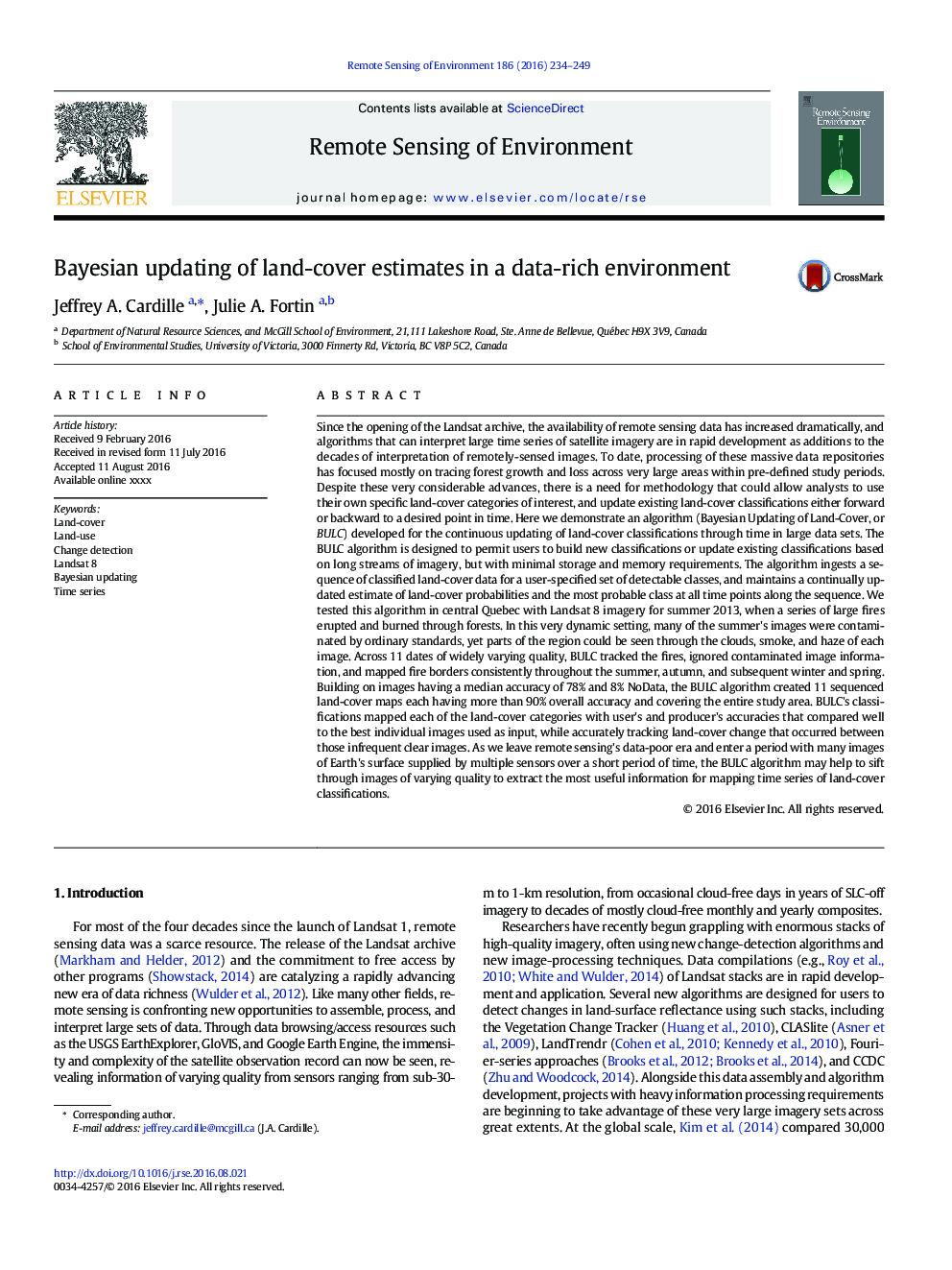| Article ID | Journal | Published Year | Pages | File Type |
|---|---|---|---|---|
| 6345056 | Remote Sensing of Environment | 2016 | 16 Pages |
Abstract
Since the opening of the Landsat archive, the availability of remote sensing data has increased dramatically, and algorithms that can interpret large time series of satellite imagery are in rapid development as additions to the decades of interpretation of remotely-sensed images. To date, processing of these massive data repositories has focused mostly on tracing forest growth and loss across very large areas within pre-defined study periods. Despite these very considerable advances, there is a need for methodology that could allow analysts to use their own specific land-cover categories of interest, and update existing land-cover classifications either forward or backward to a desired point in time. Here we demonstrate an algorithm (Bayesian Updating of Land-Cover, or BULC) developed for the continuous updating of land-cover classifications through time in large data sets. The BULC algorithm is designed to permit users to build new classifications or update existing classifications based on long streams of imagery, but with minimal storage and memory requirements. The algorithm ingests a sequence of classified land-cover data for a user-specified set of detectable classes, and maintains a continually updated estimate of land-cover probabilities and the most probable class at all time points along the sequence. We tested this algorithm in central Quebec with Landsat 8 imagery for summer 2013, when a series of large fires erupted and burned through forests. In this very dynamic setting, many of the summer's images were contaminated by ordinary standards, yet parts of the region could be seen through the clouds, smoke, and haze of each image. Across 11 dates of widely varying quality, BULC tracked the fires, ignored contaminated image information, and mapped fire borders consistently throughout the summer, autumn, and subsequent winter and spring. Building on images having a median accuracy of 78% and 8% NoData, the BULC algorithm created 11 sequenced land-cover maps each having more than 90% overall accuracy and covering the entire study area. BULC's classifications mapped each of the land-cover categories with user's and producer's accuracies that compared well to the best individual images used as input, while accurately tracking land-cover change that occurred between those infrequent clear images. As we leave remote sensing's data-poor era and enter a period with many images of Earth's surface supplied by multiple sensors over a short period of time, the BULC algorithm may help to sift through images of varying quality to extract the most useful information for mapping time series of land-cover classifications.
Related Topics
Physical Sciences and Engineering
Earth and Planetary Sciences
Computers in Earth Sciences
Authors
Jeffrey A. Cardille, Julie A. Fortin,
